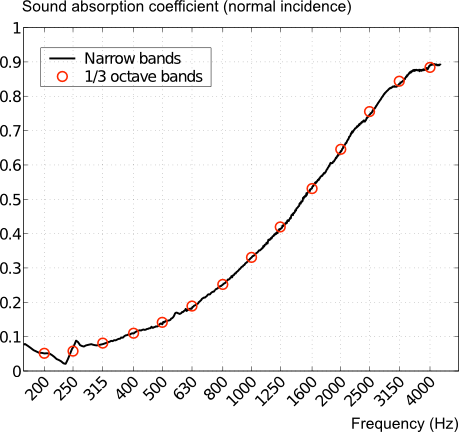In Engineering applications, sound spectrums are usually represented in octave or one-third octave frequency bands rather than in narrow frequency bands. This frequency representation is linked to the perception of sound by a human ear and it allows a compression of the amount of information. An important part of the information is however lost when converting results from narrow frequency bands to octave or one-third octave frequency bands.
The figure below represents the conversion from narrow frequency bands (range: [200 - 4 000] Hz with a frequency step of 4 Hz) to one-third octave frequency bands of the sound absorption coefficient for a 30 mm-thick fibrous material measured at normal incidence in a standing wave tube.
The measured values of the sound absorption coefficient contained in a 1/3 octave band are averaged; the obtained mean value of the sound absorption coefficient is then reported at preferred value of the 1/3 octave middle frequency .
